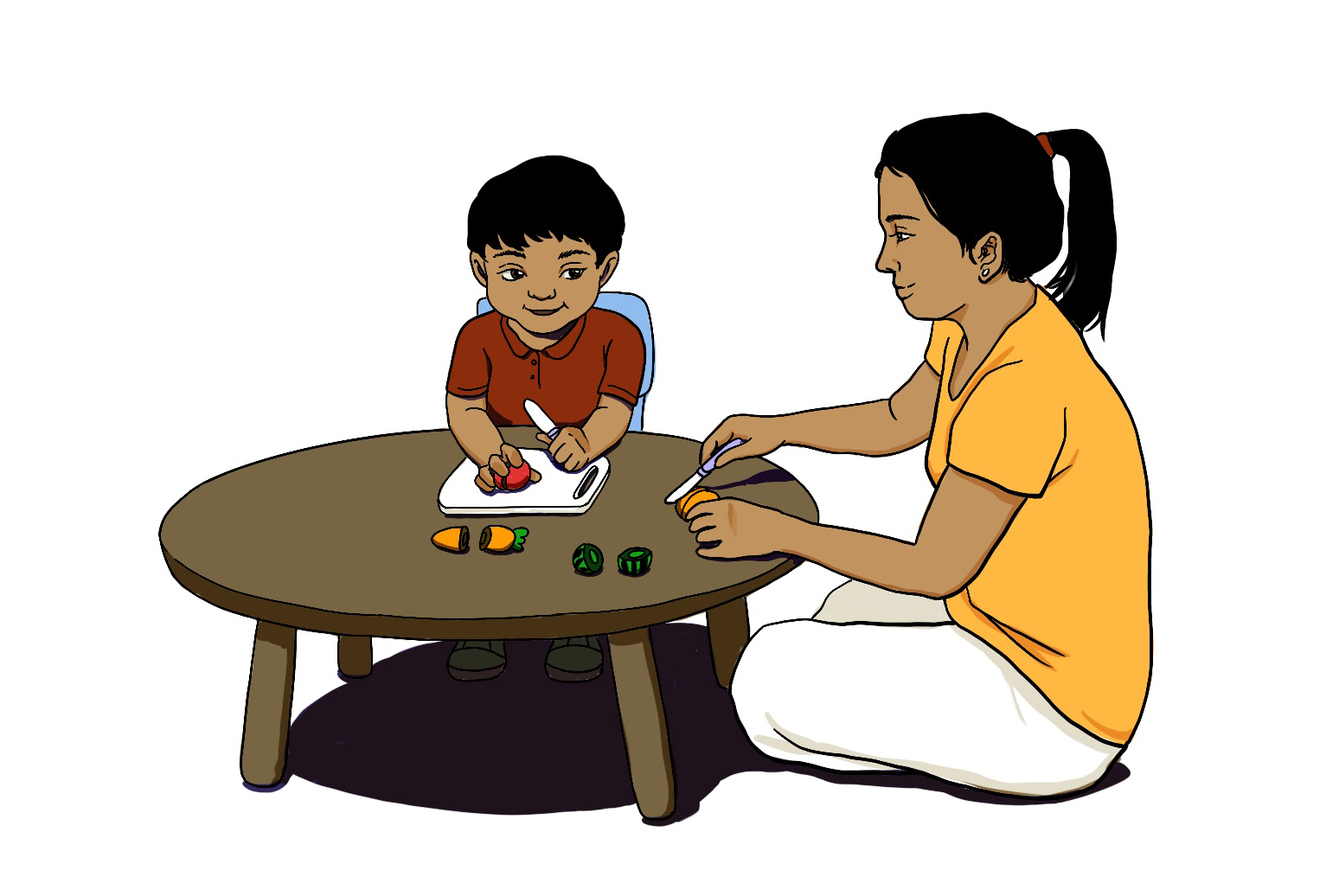Developmental Considerations
Canada’s Food Guide 2019 draws attention to social aspects of eating and family meals as an important developmental consideration for growing children. This is a welcomed addition, as the medicalization of food has traditionally focused on what we eat, and not necessarily how we eat. Mealtime is an opportunity for families to connect with each other, establish shared eating patterns, prepare and cook meals together (as illustrated in Figure 3.3), and cultivate enjoyable relationships with food. Mealtime is also a chance to build communication, provide respite from busy lives, and empower children with autonomy and choices which build their self-esteem.

For children two years and older, Canada’s Food Guide 2019 emphasizes a balanced diet with a healthy amount of vegetables and fruit as well as proteins and whole grains. While Canada’s Food Guide 2019 represents an ideal example of eating for children, it is essential for health professionals to recognize that not all children are willing to comply. Many gravitate towards foods such as cereal, pastas, breads, and chicken. Although it is acceptable for children to eat these types of foods, attention must be paid to how to achieve balance and nutrition. Collaborating with parents to understand nutritional needs or gaps in their child’s eating is important for offering a full spectrum of strategies that promote a balanced diet. For example, many parents rely on milk as a source of calcium, vitamin D, protein, and potassium, knowing that their children may not receive sufficient nutrients from other sources. Some critics warn against this practice when high-fat milks, such as 3.25% homogenized milk, satiate children and children refuse other nutrient-rich foods. In addition, high-fat milks contain lactose, which is a known irritant for many children. And of course, animal-based products (particularly red meat) have been critiqued from a health perspective because of a high concentration of saturated fats and from an environmental perspective because of the green-house gas emissions produced through agricultural practices and livestock. It is important that health professionals collaborate with families and understand their context before offering advice. This kind of collaboration establishes a baseline understanding of eating patterns, including sources of nutrients, that will help position children and their parents to identify and reach shared goals.
Canada’s Food Guide 2019 promotes water as the drink of choice, while previous iterations have focused on milk as the drink of choice. This revision is largely in response to more people, particularly children, consuming sugary drinks like juice and pop as their primary drink. Water is encouraged as a substitute to such drinks, and people are advised to limit intake of beverages with a high concentration of sugar. While the new food guide encourages low fat milk products as part of a balanced diet, there is also recognition that not all cultural groups consume milk and water is complimentary to a balanced diet. Additionally, parents may ask whether milk is required for health development in children.
The food guide is intended for persons two years to adulthood, which leaves questions and uncertainties for parents and caregivers seeking guidance for children in their early years (under two). Early childhood nutrition is remarked as one of the most crucial stages of life to consider food because it is foundational to growth and development, it sets the tone for food behaviours, and it also establishes important emotional connections with food. As such, it is important for health professionals to recognize the confusion that may arise for parents about how to maintain nutritious eating for this age cohort. Although not a focus of this book, health professionals may refer parents to these resources for children under two years of age: Infant feeding and healthy term infants. These documents provide recommendations about nutrition for healthy term infants from birth to six months and six to 24 months.
A person’s self-determination.

